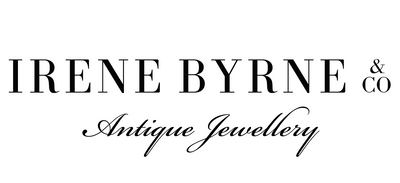1930s Rhoda Wager Oval Amethyst Ring
Irene Byrne & Co




This striking 1930s ring by esteemed Australian jeweller Rhoda Wager features a richly-hued, round cut amethyst in a handcrafted sterling silver setting. Renowned for her botanical inspirations and dedication to artisanal craftsmanship, Wager showcases her signature style in the detailed, sculptural setting that securely cradles the faceted amethyst gemstone.
The vibrant amethyst colour displays a deep royal purple with excellent clarity and hue, beautifully offset by the organic silver mount, which bears delicate hand wrought detailing along the shoulders. This piece is a testament to Wager’s commitment to artistry and individuality, making it not only a wearable treasure but also a collector’s heirloom.
Circa: 1930s
Designer: Rhoda Wager
Origin: Australia
Gemstone: Amethyst
Cut: Oval
Metal: Sterling Silver
Finger Size: N
Signed Rhoda Wager
Resizing: When purchasing a ring from us online, please make a note of your finger size in the 'Special instructions' on your 'Cart' page.
Australian Designer - Rhoda Wager (1875-1953)
Rhoda Wager was a prominent jewellery designer whose work and life reflect a deep commitment to artistry and craftsmanship. Born in 1875, in Mile End Old Town, London, she was one of five children in the Wager family. Growing up in Bristol, she pursued her passion for art at the local art school before furthering her studies in drawing and painting at the Glasgow School of Art from 1897 to 1903. Wager began showcasing her metalwork and jewellery as early as 1901 at the Glasgow Art Club and became a member of the Glasgow Society of Lady Artists.
As a generous and witty individual, Wager was a strong-willed businesswoman who played a significant role in the Australian jewellery landscape. She passed away in Brisbane on December 2, 1953, leaving behind a lasting legacy that remains closely tied to the English Arts and Crafts Movement.
